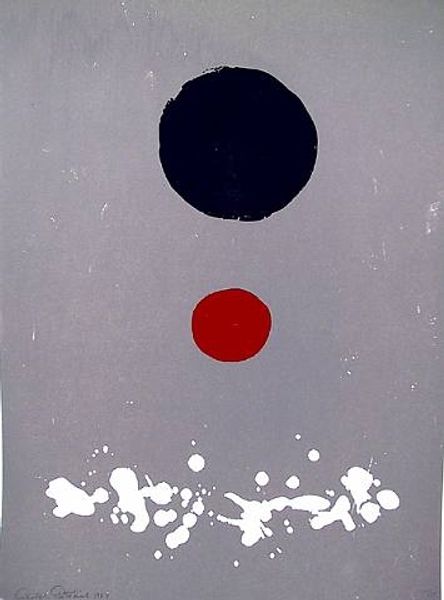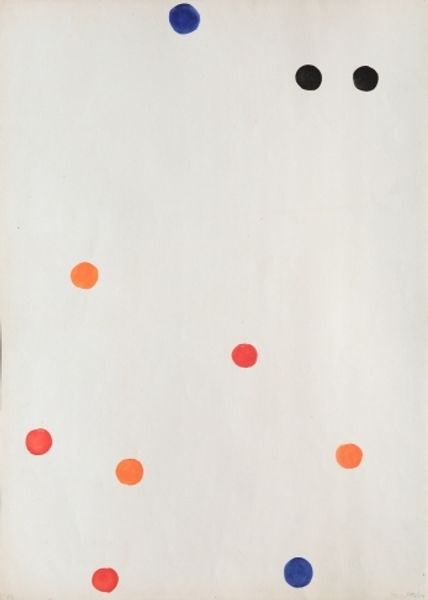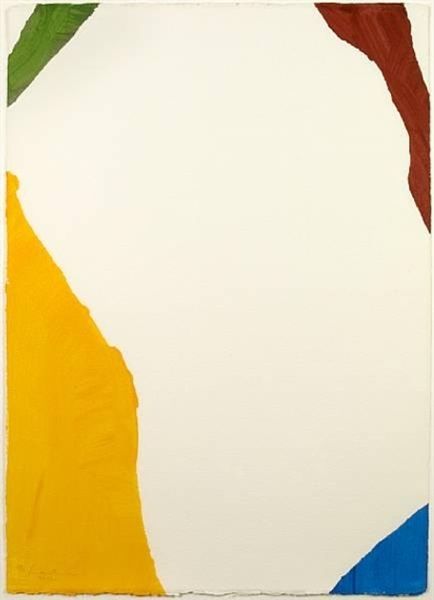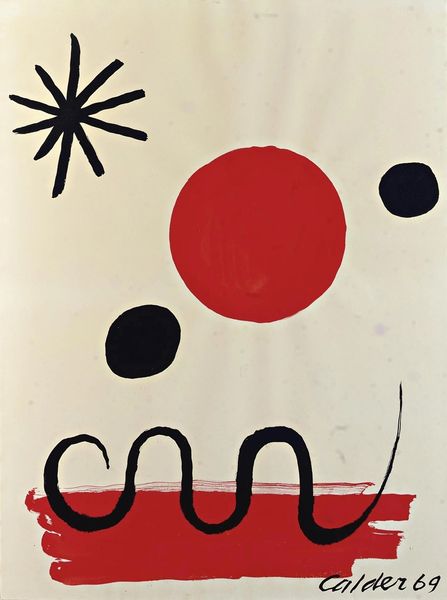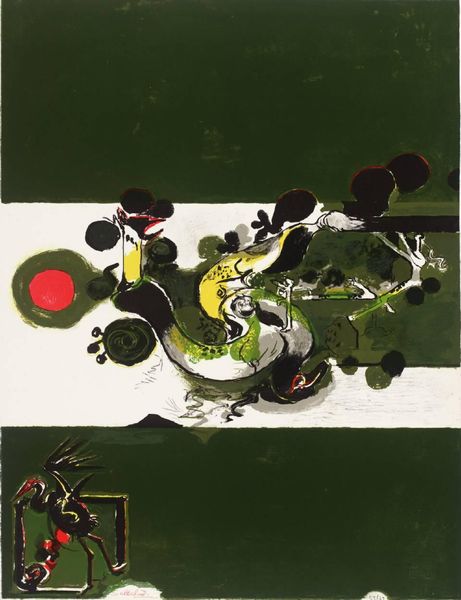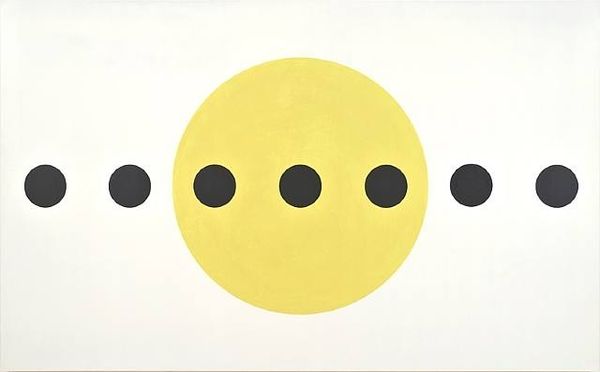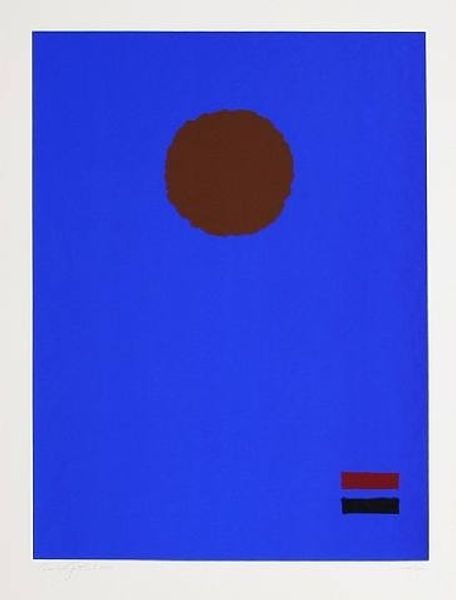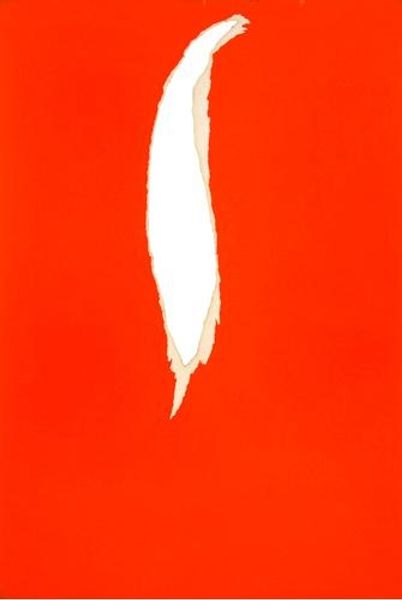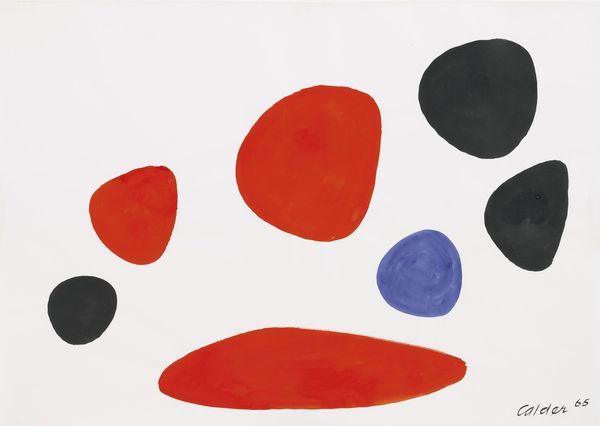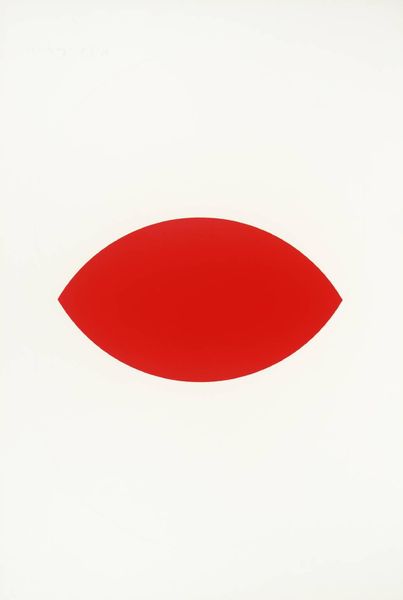
Copyright: Adolph Gottlieb,Fair Use
Editor: Here we have Adolph Gottlieb's "Flotsam" from 1967, created with acrylic paint. It’s quite striking, isn't it? The stark contrast between the vibrant circles and the chaotic black forms at the bottom creates a sense of tension. How do you interpret this work, considering its historical context? Curator: "Flotsam" is a quintessential example of Gottlieb's late-career burst of creativity that solidified the shift towards abstraction. It came at a moment when Abstract Expressionism, though initially celebrated as a uniquely American art form championing individual freedom of expression, was coming under scrutiny for its implicit biases and exclusionary practices. Editor: Exclusinary practices? Curator: Exactly. The mid-century art world began reckoning with the historical whiteness and maleness that pervaded not just the subject of artwork, but whose voices got to even be exhibited in the first place. That explains how Gottlieb shifted to simpler symbolic structures—red and green circles poised in relation to chaotic “flotsam”. Editor: Fascinating. What might that imagery express within that context? Curator: One can speculate about symbolic power dynamics, about a world tossed by societal disruption. The 'bursts,' which Gottlieb explored throughout the 1950s can also reflect a nuclear society or rising tension. He created works as political responses that allow us to look back and reflect on today's changing socio-political climate. How does that interpretation resonate with you? Editor: It gives me a completely new perspective. Before, I just saw shapes and colors; now, I see a historical narrative about societal struggles. Thank you. Curator: Precisely. Understanding the socio-political milieu transforms our appreciation of seemingly abstract forms. I am still in awe about what a fresh viewing has done for a seemingly inert canon of art!
Comments
No comments
Be the first to comment and join the conversation on the ultimate creative platform.
